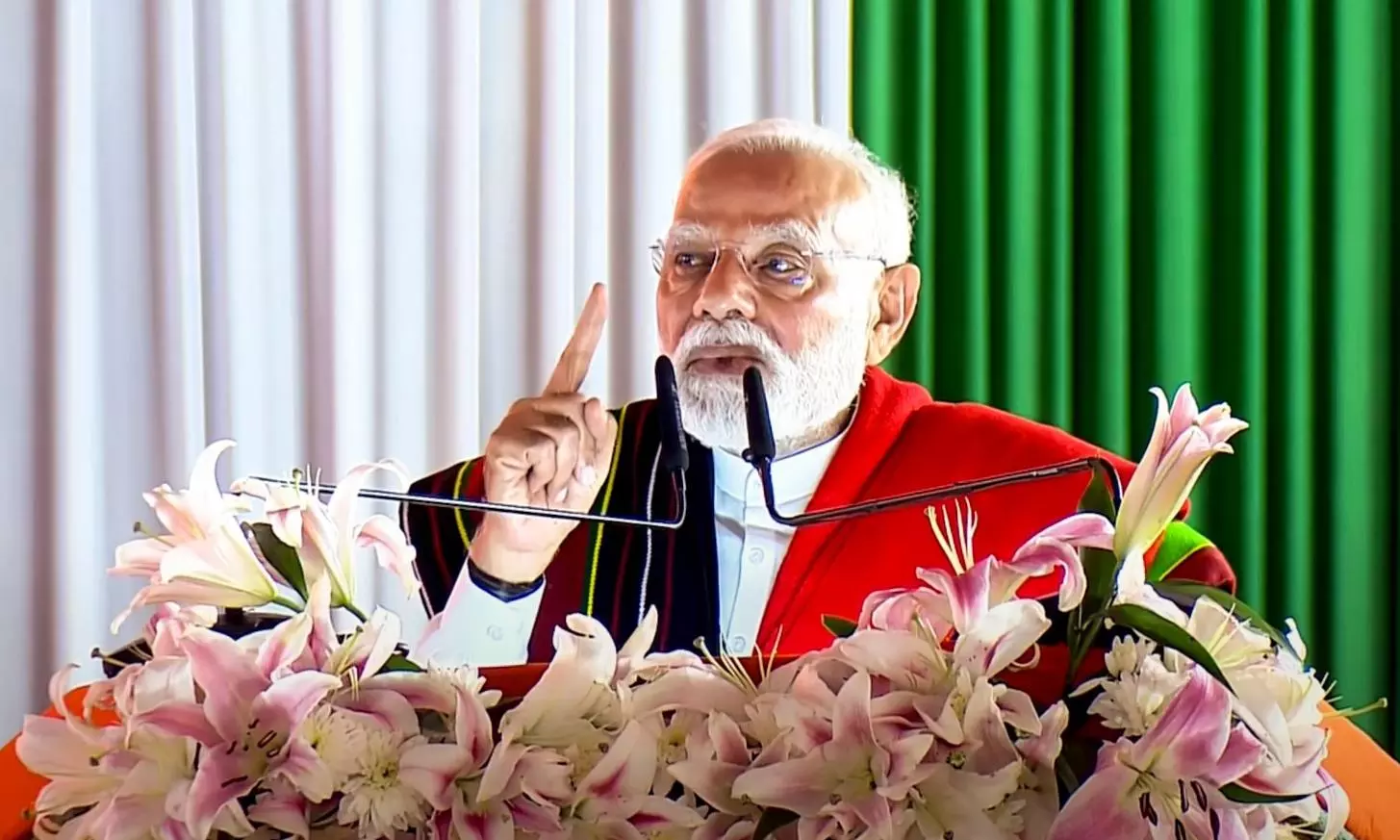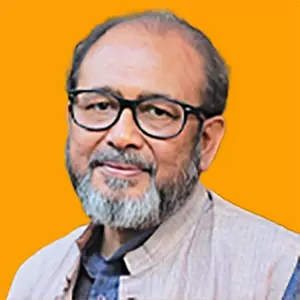
- Home
- India
- World
- Premium
- THE FEDERAL SPECIAL
- Analysis
- States
- Perspective
- Videos
- Sports
- Education
- Entertainment
- Elections
- Features
- Health
- Business
- Series
- In memoriam: Sheikh Mujibur Rahman
- Bishnoi's Men
- NEET TANGLE
- Economy Series
- Earth Day
- Kashmir’s Frozen Turbulence
- India@75
- The legend of Ramjanmabhoomi
- Liberalisation@30
- How to tame a dragon
- Celebrating biodiversity
- Farm Matters
- 50 days of solitude
- Bringing Migrants Home
- Budget 2020
- Jharkhand Votes
- The Federal Investigates
- The Federal Impact
- Vanishing Sand
- Gandhi @ 150
- Andhra Today
- Field report
- Operation Gulmarg
- Pandemic @1 Mn in India
- The Federal Year-End
- The Zero Year
- Science
- Brand studio
- Newsletter
- Elections 2024
- Events
- Home
- IndiaIndia
- World
- Analysis
- StatesStates
- PerspectivePerspective
- VideosVideos
- Sports
- Education
- Entertainment
- ElectionsElections
- Features
- Health
- BusinessBusiness
- Premium
- Loading...
Premium - Events

His long-delayed trip, after 865 days of near-radio silence, raises more questions than answers, for he offered development promises but little reconciliation
Shortly before Prime Minister Narendra Modi embarked on a two-day visit to three states in north-east India, which included a much-delayed visit to Manipur, a video of an hauntingly rendered song landed in my inbox. It was credited to Jamminthang Lhungdim, which could well be a pseudonym of a lyricist unwilling to reveal her/his identity, and is possibly crafted by AI.
The little girl asked –
"Pu Modi, where have you been?"
Modi says – “I’ve been to London.”
“What did you do there?”
“To attend the Queen’s funeral!”
Then the little girl says –
"Why don’t you come
To attend my mother’s funeral?
Who had been killed and
Raped in Manipur?"
After a chorus in the local language asking how Modi’s visit will turn out to be, the lyrics return in the female singer’s voice, which narrates a young boy asking the same questions. The reply to that goes in a similar fashion till the boy asks of the imaginary Modi — if he could visit Los Angeles to ‘console’ the victims of the wild fires, why could he not have arrived in Manipur earlier and done the same when their villages were burnt?
Three key questions
Indeed there were several questions, based in political reality, which provided the backdrop to Modi’s visit to Manipur, a state wracked by inter-community violence and the partisan stance of the ruling dispensation before governance collapsed to such an extent that the Centre could not but impose President’s rule, in February 2025.
Modi’s short visit to a state that needed the leader’s balm and healing touch is not a happy augury for India because it showed the Centre as having a purely transactional relationship with its people, even when they are troubled, that too for more than two years.
Of the three most important questions, the first was undoubtedly regarding the timing of Modi’s visit: why was he visiting Manipur now for the first time 865 days (2 years, 4 months and 10 days) after the eruption of violence, on May 3, 2023?
Once the visit was planned and the itinerary shared, it was known that he was not attempting inter-community bridge building. With the two public interactions and his addresses being in the hills of Churachandpur, dominated by the Kuki-Zo community, and in the Valley area of Imphal, where the Meitei people are the dominant inhabitants, the question being asked was whether Modi would unveil a ‘deal’ struck by the Centre’s representative, Governor Ajay Kumar Bhalla.
BJP's resurrection
And finally, there was the question of whether his visit to the strife-torn state would see the initiation of the BJP's resurrection in Manipur as a unified unit.
Also read: PM Modi visits Manipur: Has it come too late?
Bhalla’s appointment as Governor of Manipur in December 2024 served the message that the Centre had at long last taken matters in its own hands and decided to marginalise then Chief Minister N Biren Singh.
This process was eventually completed in February 2025, when central rule was imposed after the Centre secured Singh’s resignation in the face of rising dissidence within his party and an imminent no-confidence motion by the Congress party in the state Assembly.
Alienation of Manipur
When speculations over Modi’s visit to Manipur were settled and it was announced, the moot point was that the government and BJP had concluded that the state was now ‘safe’ for such a trip. But the schedule also served to indicate that a hop-step-and-jump, which underscored that the ‘safety’ quotient was only that much yet for the Prime Minister.
Modi’s short visit to a state that needed the leader’s balm and healing touch is not a happy augury for India because it showed the Centre as having a purely transactional relationship with its people, even when they are troubled, that too for more than two years.
The emphasis in the official announcement about Modi’s visit to Manipur, either when impending or after conclusion, was on projects valued at thousands of crores of rupees, which were either inaugurated or their foundation stones laid for the “development” of the state.
What Manipur needs
But, what the people required, or expected, were answers to the question so poignantly raised in the song by unknown artists. The level of the State’s alienation from the people can easily be gauged by the number of ‘hits’ and ‘forwards’ of this song and juxtaposing it with ‘shorts’ excerpted from Modi’s two speeches, one each in Meitei and Kuki-Zo dominated areas.
Manipur requires reconciliation and demonstration that the administration shall not be partisan — as it was believed to be during Singh’s tenure — and will henceforth actively work towards creating and an atmosphere of compositeness. The state cannot be allowed to remain divided, but sadly Modi’s visit did not make efforts to mend this social rupture.
Also read | Modi’s projects offer little solace to thousands in Manipur’s relief camps
It is not that Modi did not talk about peace and resolution being essentials for continued development. At Churachandpur, he assured people that “establishing peace is essential for development anywhere”. However, he immediately embarked on self-praise by asserting that in “the past 11 years” (read since 2014, after he assumed office) several “long-standing disputes and conflicts in the North East have been resolved. People have chosen the path of peace and given priority to development.”
Beyond accords
Historically, governments have embarked on ‘accord’ signing sprees on assuming office. Rajiv Gandhi had begun this with the Assam Accord and the agreement with Sant Harchand Singh Longowal. But more often than not, these have not succeeded, and new discords have cropped up.
More than a decade after 2014, these issues should not require reiteration by Modi. Instead, he needs to face the failures and provide answers for them.
In his speech, Modi claimed that “dialogues have begun with different groups in the hills and valleys for reaching agreements.” The BJP’s political hegemony, along with partners in various states is based on non-ideological concerns, save possibly Assam where he raked the Hindutva pitch (with his charge that Congress allowed ‘infiltrators’ a free run and this impeded development).
Non-partisan tilt
In Manipur, if Modi wishes to emerge as the harbinger of peace, he has to underplay his cultural nationalistic orientation and not be seen as tilting in favour of one community like Singh’s government.
Also read | PM Modi’s visit to Manipur comes amid a minefield of challenges
Sadly, Modi in his speeches did not emerge as a belated peacemaker but remained the quintessential performative leader that he is. If his first visit after ethnic clashes erupted in an unprecedented manner more than 850 days ago, he did not provide any explanation staying away so long. He also did not provide even a nutshell of any strategy for the future.
The PM suggested that Bhalla is at work by mentioning his government’s “commitment to establishing peace through dialogue, respect, and mutual understanding”. But, he provided no indication of how this would be done.
It can be argued that Bhalla’s appointment last year, and the fact that Singh was not named by Modi in any of his speeches, show the Centre is now making earnest efforts to resolve the conflict between the two dominant communities.
Old Modi tactic
But this genuineness cannot be underscored by — what many have claimed — using an old Modi tactic: inaugurating projects which were already 70-80 per cent completed during the previous regime’s tenure and laying fresh foundation stones for projects that will take several years to complete.
But, this is not what the people of Manipur are now aspiring for. Congress President Mallikarjun Kharge has termed Modi’s trip to the state as “tokenism” and a “grave insult” to its people.
The charge may be part of the Opposition’s political rhetoric aimed at putting pressure on the government to hold the next assembly elections before it is due in March 2027.
But, there is no evidence to suggest that the government is working towards reining in the consistent efforts of the BJP’s ideological fountainhead, the Rashtriya Swayamsevak Sangh’s campaign to make the Meitei community more emboldened.
Hindrances to peace
In recent weeks, there has been some progress with the RSS-backed peace process. Ahead of Modi’s visit, an agreement was signed with one of the Kuki groups with an assurance to open NH2 for free movement for all communities.
Watch | Manipur crisis: Why is Amit Shah still relying on Biren Singh?
But the RSS will also have to relent on its campaign that the demand for the separation of the hill administration is essentially a part of the Church’s “conspiracy” to convert Kukis to Christianity and eventually create a rift with the Hindu Meiteis, who are also seeking the status of Scheduled Tribe.
The Kukis reject this charge and instead say that the RSS is backing hegemonism among groups of Meiteis. The problem stems from the deep-rooted and decades-old political engagement of the RSS in connecting various tribes of the North East with the mythical notion of Bharatvarsha and/or ancient India.
That, however, is another matter, although this would pose considerable hindrance in the road to peace in Manipur.
(The Federal seeks to present views and opinions from all sides of the spectrum. The information, ideas or opinions in the articles are of the author and do not necessarily reflect the views of The Federal.)


